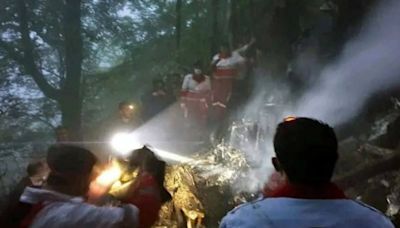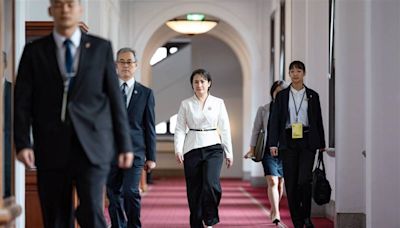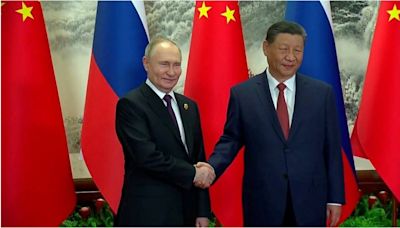搜尋結果
Iran, [a] officially the Islamic Republic of Iran ( IRI ), [b] also known by its Western-given name Persia, [c] is a country in West Asia. It is bordered by Iraq to the west and Turkey to the northwest, Azerbaijan, Armenia, the Caspian Sea and Turkmenistan to the north, Afghanistan to the east, Pakistan to the southeast, the Gulf of Oman and ...
Geographically, the country of Iran is located in West Asia and borders the Caspian Sea, Persian Gulf, and Gulf of Oman. Topographically, it is predominantly located on the Persian Plateau. Its mountains have impacted both the political and the economic history of the country for several centuries. The mountains enclose several broad basins, on ...
- West Asia
- Mount Damavand, 5,610 m (18,406 ft)
- Ranked 17th
- Caspian Sea, −28 m (−91.9 ft)
- Geology
- Geography
- History
- Archaeology
- Flora
- Fauna
- Economy
- See Also
- References
- External Links
In geology, the plateau region of Iran primarily formed from the accretionary Gondwanan terranes between the Turan platform to the north and the Main Zagros Thrust; the suture zone between the northward moving Arabian plate and the Eurasian continent is the Iranian Plateau. It is a geologically well-studied area because of general interest in conti...
The Iranian Plateau in geology refers to a geographical area north of the great folded mountain belts resulting from the collision of the Arabian Plate with the Eurasian Plate. In this definition, the Iranian Plateau does not cover southwestern Iran. The plateau extends from East Azerbaijan Province in northwest of Iran (Persia) all the way to Afgh...
The Iranian plateau may have played a major role in the expansion of modern humans after the Out of Africa migration, serving as 'population hub' for 'Common Eurasians', where they subsequently diverged into 'Ancient East Eurasians' and 'Ancient West Eurasians' at c. 50,000 years ago, and from where they expanded in two waves during the Initial Upp...
Archaeological sites and cultures of the Iranian Plateau include: 1. Mehrgarh, predecessor of Indus Valley civilization 2. Central Iranian Plateau ("Jiroft culture") 2.1. Shahr-i Sokhta 2.2. Konar Sandal 2.3. Tepe Yahya 3. Zayandeh River Civilization 4. Tappeh Sialk 5. Paleolithic sites 5.1. Niasar 5.2. Sefid-Ab 5.3. Kaftar Khoun 5.4. Qaleh Bozi Ca...
The plateau has historical oak and poplar forests. Oak forests are found around Shiraz. Aspen, elm, ash, willow, walnut, pine, and cypress are also found, though the latter two are rare. As of 1920, poplar was harvested for making doors. Elm was used for ploughs. Other trees like acacia, cypress, and Turkestan elm were used for decorative purposes....
The plateau is abundant with wildlife including leopards, bears, hyenas, wild boars, ibex, gazelles, and mouflons. These animals are mostly found in the wooded mountains of the plateau. The shores of the Caspian Sea and the Persian Gulf house aquatic birds such as seagulls, ducks, and geese. Deer, hedgehogs, foxes, and 22 species of rodents are fou...
The Iranian Plateau harvests trees for making doors, ploughs, and baskets. Fruit is grown also. Pears, apples, apricots, quince, plums, nectarines, cherries, mulberries, and peaches were commonly seen in the 20th century. Almonds and pistachios are common in warmer areas. Dates, oranges, grapes, melon, and limes are also grown. Other edibles includ...
Y. Majidzadeh, Sialk III and the Pottery Sequence at Tepe Ghabristan. The Coherence of the Cultures of the Central Iranian Plateau,Iran 19, 1981, 141–46.
History of Iran. The history of Iran (or Persia, as it was commonly known in the Western world) is intertwined with that of Greater Iran, a sociocultural region spanning the area between Anatolia in the west and the Indus River and Syr Darya in the east, and between the Caucasus and Eurasian Steppe in the north and the Persian Gulf and the Gulf ...
Website. www .gsi .ir. The Geological Survey and Mineral Exploration of Iran or in brief GSI is a government agency responsible for conducting geological and mineral surveys throughout the country, collecting the results of activities carried out in this field, establishing coordination, preparing and publishing geological maps of Iran.
- about 1000
- GSI
- 1962; 61 years ago
- Ministry of Industry, Mine and Trade
Azerbaijan or Azarbaijan ( Persian / Azerbaijani: آذربایجان, romanized : Āzarbāyjān, Persian pronunciation: [ɒːzæɾbɒːjˈdʒɒːn], Azerbaijani pronunciation: [ɑːzæɾbɑjˈdʒɑn] ), also known as Iranian Azerbaijan, [1] is a historical region in northwestern Iran that borders Iraq and Turkey to the west, and the Nakhchivan ...
The Iranian Revolution ( Persian: انقلاب ایران, Enqelâb-e Irân [ʔeɴɢeˌlɒːbe ʔiːɾɒːn] ), also known as the Islamic Revolution ( انقلاب اسلامی, Enqelâb-e Eslâmī ), [4] was a series of events that culminated in the overthrow of the Pahlavi dynasty in 1979.



